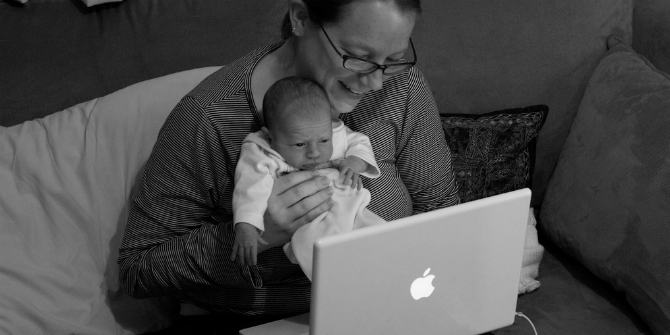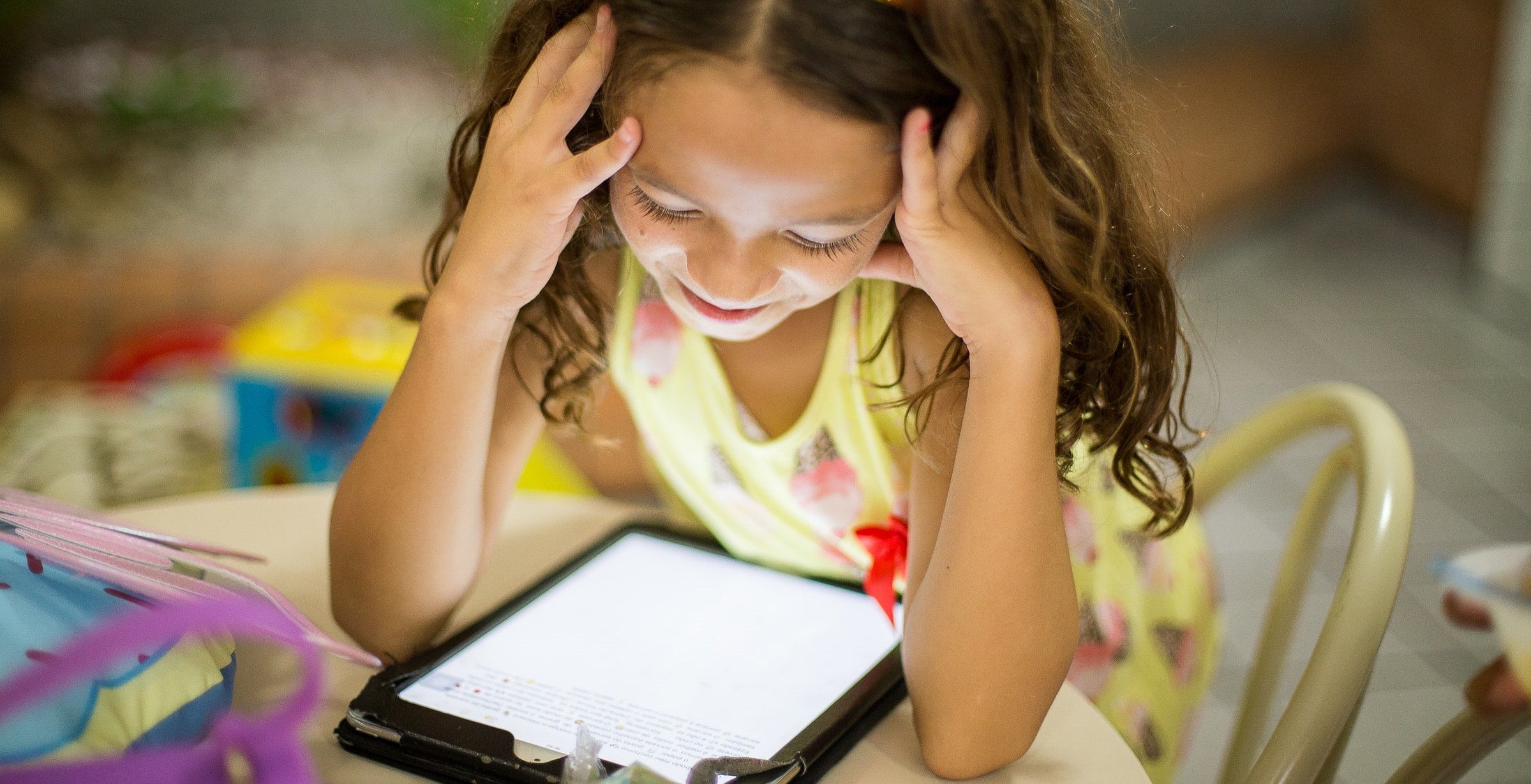 Misinformation and distrust are the characteristics of our time and make the question of how to promote critical digital literacy particularly important. Here, Gianfranco Polizzi suggests ten texts that offer a framework for thinking about how to approach it. Gianfranco is a PhD researcher at the Department of Media and Communications, LSE. Employing a mixed qualitative methodology, his PhD looks at the intersection of critical digital literacy with practices of civic, political participation. [Header image credit: A. Kelly, CC BY 2.0]
Misinformation and distrust are the characteristics of our time and make the question of how to promote critical digital literacy particularly important. Here, Gianfranco Polizzi suggests ten texts that offer a framework for thinking about how to approach it. Gianfranco is a PhD researcher at the Department of Media and Communications, LSE. Employing a mixed qualitative methodology, his PhD looks at the intersection of critical digital literacy with practices of civic, political participation. [Header image credit: A. Kelly, CC BY 2.0]
Since the 2016 US election and Brexit vote, debate around so-called ‘fake news’ has sharpened concerns that the internet and social media are spreading misinformation and thereby undermining democracy and its reliance on a well-informed citizenry. But the problem of misinformation is not the outcome of using digital media per se. The Zinoviev letter, published in 1924 by the Daily Mail, is an example of ‘fake news’ that preceded the internet by many decades. Intended to persuade British voters not to vote Labour, the letter is thought to have been a forgery. According to historian Gill Bennett it “was forged by a MI6 agent’s source and almost certainly leaked by MI6 or MI5 officers to the Conservative Party”.
The problem of misinformation today is an outcome of what has been referred to as post-truth – a condition whereby facts and objectivity are overshadowed by personal beliefs and emotions. Tackling ‘post-truth’ is hard, as it is deeply rooted in societal deficiencies. These include citizens’ alienation from the political system, distrust in expertise and political strategies that take advantage of voters’ limited civic and political knowledge. But equally news reporting is often blamed for addressing citizens as consumers and spectators, weakening their sense of civic responsibility. And while the internet is not the ultimate cause of post-truth, it multiplies the possibilities of producing and consuming misinformation.
What can be done about it?
We all have a duty to do something – albeit in different ways. High-tech corporations are often expected to develop and implement technological fixes in the hope that algorithms can tackle fake news by grading reliability, checking bots and scrutinising content. Defining misinformation, however, is problematic. Expecting algorithms to distinguish between satire and deliberatively or inadvertently fabricated content is rather far-fetched – at least for the time being. More problematically, technological fixes and monitoring beg questions about transparency and privacy. Furthermore, fake news does not spread only in the hands of individual users – citizens or politicians – and within platforms like Facebook and Twitter. A few months ago, the BBC reported claims that the Blue Whale “suicide game” was leading teenagers to take their own lives. However, both the UK Safer Internet Centre and the fact-checking website Snopes failed to find evidence that it had done so. It is vital, therefore, that established news providers and journalists fact-check their sources.
Regulation should also play a pivotal role. Launched in March 2017, the UK Parliament inquiry into the fake news phenomenon exemplifies the need for policies. In the meantime, as post-truth goes beyond ‘fake news’, experts and academics advising policymakers should find a better way to engage in dialogue with the public. Citizens, on the other hand, have a duty to be well-informed about civic and political matters so they can make informed decisions when they delegate power to politicians. But political literacy is not enough. Since political communication and engagement are highly mediated by digital technologies (especially in the West), the notion of critical digital literacy demands additional skills, knowledge and actions. The question of how to approach and promote critical digital literacy, as a dimension of the umbrella notion of media literacy, becomes particularly important.
Ten key readings
Approaches to critical digital literacy vary considerably depending on their expectations of internet users’ abilities and knowledge, their age and the context. I recommend ten readings which in different ways contribute to an understanding critical digital literacy in our distrustful media age.
- Faith Rogow’s 2015 Media Literacy in Early Childhood Education: Inquiry-Based Technology integration. Published as a book chapter in Donohue’s Technology and Digital Media in the Early Years: Tools for Teaching and Learning, this piece proposes an understanding of media literacy education as developmentally appropriate for early childhood. Rogow suggests that childhood education should focus on both risk avoidance and learning, emphasising the importance of approaching media literacy as incorporating reasoning and reflection about media content.
- David Buckingham’s 2007 Digital Media Literacies: Rethinking Media Education in the Age of the Internet. This article transcends a functional approach to digital literacy – the technical skills necessary to use the internet – by advocating a critical approach. It expands on our notions of what may be expected of users’ competence. Going beyond evaluating content veracity and mediated representations, it argues that critical digital literacy should incorporate a broader understanding of the internet and its role within political economy structures related to issues of ownership, funding, regulation and advertising.
- Renee Hobbs’s 2010 Digital and Media Literacy: A Plan of Action. The protectionist paradigm often underpins children’s need for protection against inappropriate content and issues of privacy and safety. The empowerment paradigm focuses on the possibility of using traditional and digital media for self-expression, communication and social inclusion. Hobbs argues that both paradigms should be seen as “two sides of the same coin” in that “personal, social and cultural benefits” may be gained “from making wise choices about information”. Critical evaluation and production of online content are therefore “core competencies of citizenship in the digital age” for both the young and old.
- Ola Erstad and Synnøve Amdams’ 2013 From Protection to Public Participation. Erstand and Amdams propose a unified understanding of media literacy as 1) individual abilities, 2) a social phenomenon concerned with democratic citizenship, and 3) critical understandings of content, media systems and institutions. Understanding how the media environment is embedded in power structures means appreciating producers’ purposes, the implications of media consumption and production of user-generated content, as well as the role of alternative media.
- Douglas Kellner and Jeff Share’s 2007 Critical Media Literacy, Democracy, and the Reconstruction of Education. A book chapter in Macedo and Steinberg’s Media Literacy: A Reader, this draws on critical pedagogy and cultural studies to address the relevance of critical media literacy for democracy. It looks at the emancipatory potential of alternative digital media that challenge dominant representations.
- Robert Duran, Bill Yousman, Kaitlin Walsh and Melanie Longshore’s 2008 Holistic Media Education: An Assessment of the Effectiveness of a College Course in Media Literacy. This piece provides evidence that integrating critical media literacy into higher education can give students a better knowledge of media structures and an awareness of media’s influence. It precedes more recent empirical work focusing on a broader understanding of online civic and political engagement as discussing, sharing and getting information. Kahne and colleagues have argued that digital literacy education – teaching how to create, post and critically evaluate online content – is associated with an increase in performing political activities online and exposure to different perspectives.
- Katherine Fry’s 2014 What Are We Really Teaching?: Outline for an Activist Media Literacy Education. Published in De Abreu and Mihailidis’ Media Literacy Education in Action: Theoretical and Pedagogical Perspectives, Fry argues that critical digital literacy needs to incorporate awareness of the internet’s democratising potentials and structural constraints. The internet is often praised for its potential to decentralise communication and enable freedom of expression. At the same time, its democratising potential remains constrained by data surveillance, privacy implications and governmental efforts to control it.
- Henry Jenkins, Sangita Shresthova, Liana Gamber-Thompson, Neta Kligler-Vilenchik and Arely Zimmerman’s 2016 By Any Media Necessary. This book draws on critical pedagogy while retaining a focus on creativity and engagement with multimodality. Through case studies, it shows that networked civic engagement within online community platforms encourages reflexivity and critical deliberation about both social and political issues and the role of the internet.
- Luciana Pangrazio’s 2016 Reconceptualising critical digital literacy. Pangrazio offers a critique of the critical pedagogy tradition as often revolving around users’ critiques of the social rather than the digital. It also criticises the New Literacy Studies tradition for overly focusing on users’ creative practices with digital media, often overlooking their critical understandings.
- Divina Frau-Meigs, Irma Velez and Julieta Flores Michel’s 2017 Public Policies in Media and Information Literacy in Europe: Cross-Country Comparisons. Different definitions of media literacy lead to different policies. This book focuses on the relevance of defining media literacy holistically as a combination of skills, knowledge and dispositions which are essential for social inclusion and democratic participation. The private sector, it argues, is likely to encourage digital literacy as a way to boost employability and liberal economic agendas. The public sector and the education system, by contrast, tend to promote media literacy (often in tandem with civic education) as a critical activity. This connotation is reflected not only in the ability to evaluate media systems, but in the skills and knowledge needed to participate in society in the digital age.
Recommendations
Each of these readings has something to say about how critical digital literacy should be approached. What stands out?
- Critical digital literacy is not only about evaluating online content but also understanding the internet’s production and consumption processes, its democratising potential and its structural constraints.
- Critical digital literacy should be understood as essential in protecting people of all ages from misinformation, as well as in fostering social inclusion and the civic and political empowerment that comes from engaging reflexively with digital media.
- Critical digital literacy may enable us to reflect critically on social issues, and to engage in both institutional and non-institutional politics. An example of the latter might be involvement in alternative media or activism. Nevertheless, in order to be digital, critical digital literacy needs to incorporate understandings of the internet and the digital environment.
- The public sector – and the education system in particular – have a responsibility to promote and implement a holistic approach to critical digital literacy, so as to contribute to social inclusion and democratic participation mediated by digital technologies.
Addressing the post-truth phenomenon requires concerted efforts from multiple stakeholders such as governments, corporations, journalists and experts – actors who share responsibility in different ways. It would be a mistake to believe that citizens are not a part of this. While alienation from politics, distrust in expertise and low political literacy play a crucial role, ensuring everyone can benefit from critical digital literacy is vital.
Notes
This text was originally published on the LSE Media Policy Project blog and has been re-posted with permission.
This post gives the views of the authors and does not represent the position of the LSE Parenting for a Digital Future blog, nor of the London School of Economics and Political Science.





